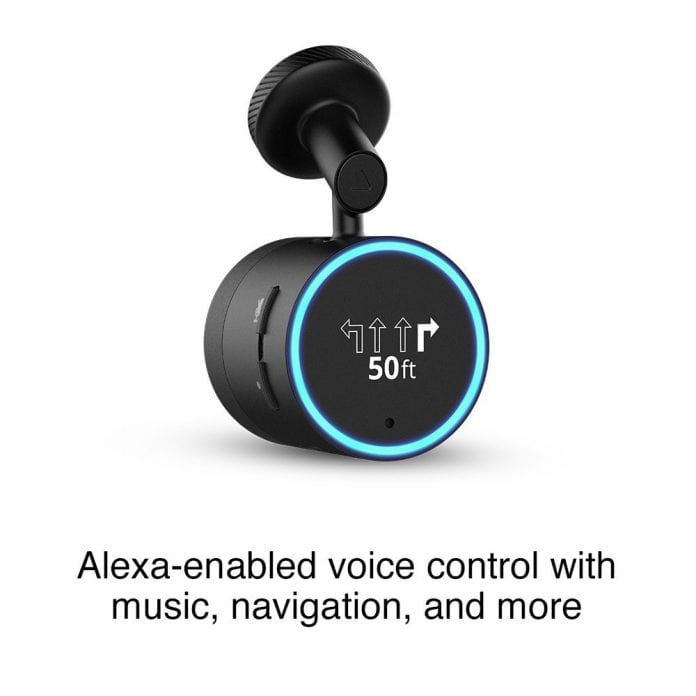
A new device from accessory company Garmin will allow consumers to add Amazon’s Alexa voice assistant to their cars using an aftermarket add-on.
Garmin’s Speak, which is available for $150, will mount on a car’s windshield or dashboard and pair with an app on the user’s phone to connect to Amazon and let the user speak to Alexa.
There have been other devices to bring Alexa into the car, but Garmin’s Speak offers a number of key advantages over competitors that could attract consumers.
It’s the first device that pairs Alexa with turn-by-turn navigation. Other in-car Alexa implementations — both aftermarket devices and cars with Alexa built in — haven’t been able to offer navigation from the voice interface. Garmin’s solution, though, will offer both audio navigation narrated by Alexa and visual indicators using a small LED screen built into the device that indicates which direction someone should drive and when their next turn is.
Drivers will also be able to use Alexa to queue up music, remotely control connected home devices, and get the news. The Speak will allow users to do most of the things people use smart speakers for, like playing music or checking the weather forecast, which are the most common voice-assistants tasks, performed by 91% and 90% of smart speaker owners, respectively, according to a survey from NPR and Edison Research. Garmin’s Speak, though, seems to only work with Amazon’s music services at this point.
Unlike Amazon Echo, through, the Speak doesn’t support Alexa calling or messaging.This is an issue for many third-party Alexa devices, limiting their utility as Amazon limits the availability of this new service to its own devices. After navigation and playing music or podcasts, calling is one of the most common things people do in cars, and the lack of support for it could hinder Garmin’s Speak and other in-car Alexa implementations.
The growth of voice in the car is a key trend that is changing what people can do in the car. Devices like Garmin’s — and cars with Alexa built-in from automakers like Ford, BMW, and Nissan — are allowing drivers to consume media content, message with friends, and even buy goods or pay for services from the driver’s seat. As more cars are connected (BI Intelligence forecasts that global annual shipments will top 77 million by 2025) the role of voice will continue to grow, but devices like Garmin’s Speak will continue to play a part in connecting cars that are already on the road.
Media consumption is at a saturation point. After rising for much of the last decade, total digital time spent has been nearly static since the start of 2015. As a result, it’s increasingly difficult for content producers to win over minutes of consumers’ time.
One platform, though, is poised to move the needle and provide a new avenue to boost digital time spent: the connected car. Consumers will spend more time in cars that offer a range of connectivity options, giving them the chance to use the services they know and love in the car.
The key question for service providers is how to take advantage of the connected car by integrating their services into this growing platform.




































